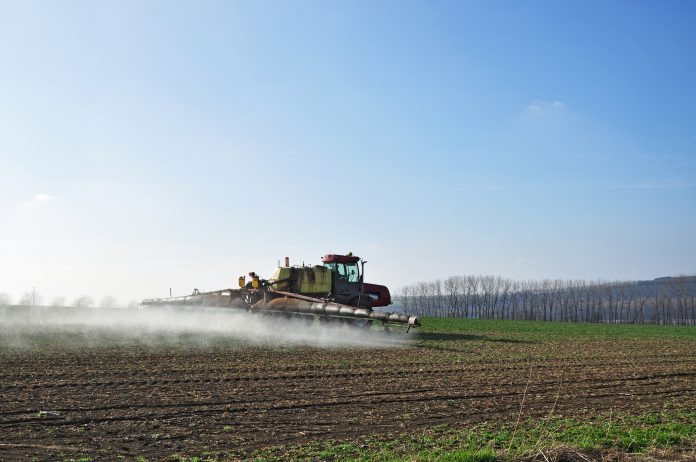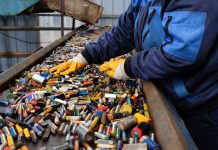Aarthi Janakiraman, Research Manager, Chemicals and Advanced Materials at TechVision, Frost & Sullivan, analyses bio-based fertilisers and ponders if they are a potential move towards the circular economy
Climate change, growing population, limited natural resources, land degradation are challenges that span across countries and continents. Various global and regional measures are underway to mitigate the risks caused by these and creating a viable circular economy is one of the all-encompassing approaches that span across industries, regions and even end-consumers. Recycling and reuse of raw materials and products are one of the governing principles of the circular economy. It not only targets only plastic waste, but also others such as biomass and organic matter. The reuse of biomass and organic matter into viable products is prominent in the agriculture, forestry and similar sectors compared to others. While agricultural waste can be used as feedstock to generate biofuels, animal feed, biochemical intermediates, etc., one of the primary uses is the manufacture of bio-based fertilisers or bio-fertilisers.
European agriculture is traditionally import driven and is still largely dependent on chemical fertilisers, despite the growing interest in the use of bio-based ones. Some of the key nutrients such as nitrogen and phosphates are integral in fertilisers. Phosphorus is a finite resource and Europe has a negligible source of phosphorus. Nitrogen recovery cycle is energy-intensive and has an impact on the food production cycle. Both can also impact water and air quality. Bio-based fertilisers can help in mitigating key challenges linked with traditional fertilisers. Apart from its obvious contribution towards sustainability, it can also overcome risks associated with decreasing efficiency of soil nutritional management through natural processes. From an innovation standpoint, it encourages innovation, research efforts and even investment not only towards technology and product development but also towards the circular economy.
Adoption of bio-based fertilisers: Challenges to overcome:
- Despite growing interest in bio-based fertilisers, the commercial adoption is still in nascent stages, due to various contributing factors. While existing regulations treat Europe and in certain cases, the UK as a single market and facilitate free movement of goods, this is not the case for bio-based ones. Varying national standards and regulations make it difficult for manufacturers to sell across countries and hence more than half of the produced bio-based fertilisers stay in the country of origin, disrupting the supply-demand balance. Efforts by the European Commission towards exploring the viability of including bio-based/organic fertilisers within the purview of fertilisers regulations and granting access to the CE mark can overcome some of the difficulties while ensuring quality and safety as associated with the CE marked products.
- Designing and technologies that can help in valorising and reusing agricultural by-products and other biowaste components as raw materials (be it primary or secondary) for the fertiliser industry can potentially help in developing effective nutrient recovery solutions, biorefinery technologies that can help in achieving a more efficient fertiliser and agriculture value chain. An added advantage would be the reduced dependence towards imports, especially for raw materials, minimise resource depletion and even potentially reducing the overall environmental impact of the fertiliser industry.
- Optimising the use of nutrient-rich streams such as manure, sewage sludge and food waste for the production of bio-fertilisers for general purpose and specific action. Despite the perceived benefits of these streams, nutrient recovery is governed by high leakage losses and low efficiency. Improving handling and storage can potentially overcome some losses. Developing processing techniques that help in the conversion of manure into a concentrated product, better stabilising and nutrient extraction techniques from sludge, better collection and process flow for use of food waste as raw material can help in developing nutrient-rich products with optimal bioavailability.
Call for action:
- Integrated technology projects that span the entire R&D cycle from concept to full-field experiments to commercial testing; developmental efforts to facilitate and encourage technological validation; dedicated research for developing fertilisers from each of the waste streams and applicability of each.
- Projects that can help in streamlining waste collection and recovery to ensure a steady supply of feedstock and raw materials.
- Efforts for mapping, estimating and validating the nutrient contents of side streams and biowaste to and technology development for large scale manufacture.
- Field testing and scientific validation of the bio-availability and impact of bio-based fertilisers on the nutrient profile of soil and other environmental factors, including the potential of organic contaminants to determine the most suitable bio-based fertilisers with highest agroeconomic efficiency.
- Stimulants that encourage farmers and manufacturers to use and manufacture bio-based fertilisers, not restricted to fiscal reliefs and tax subsidies.
The final word
With a continuing focus on the circular economy, innovative and new processes for nutrient recovery from various waste streams are being explored. Use of recovered nutrients for the manufacture of fertilisers that can potentially substitute conventional fertilisers is a key revenue stream for upcycling and clean-tech companies. Despite the various benefits of these fertilisers, its wide-scale commercial success largely depends on farmers and growers. These mustn’t be perceived as a one-off, novel product or an interesting technique that can be treated as an experiment. Bio-based fertilisers must be positioned so that it’s in line with their concept of circular economy and sustainability. To achieve this, more research on the properties, differentiating factors and advantages that farmers and growers will regard as important, must be conducted and ensured. This would be vital for the agrarian community to choose bio-based fertilisers over their conventional counterparts by moving towards a more sustainable future.
References
Aladjadjiyan, Anna & Penkov, Dimo & Verspecht, Ann & Zahariev, A & Kakanakov, Nikolay. (2016). Biobased Fertilizers -Comparison of Nutrient Content of Digestate/Compost. Journal of Agricultural and Ecological Research International. 8. 1-7. 10.9734/JAERI/2016/25217.
Katarzyna Chojnacka, Konstantinos Moustakas, Anna Witek-Krowiak, Bio-based fertilizers: A practical approach towards circular economy, Bioresource Technology, Volume 295,2020,122223, ISSN 0960-8524, https://doi.org/10.1016/j.biortech.2019.122223.
Juan Tur-Cardona, Ole Bonnichsen, Stijn Speelman, Ann Verspecht, Louise Carpentier, Lies Debruyne, Fleur Marchand, Brian H. Jacobsen, Jeroen Buysse, Farmers’ reasons to accept bio-based fertilizers: A choice experiment in seven different European countries, Journal of Cleaner Production, Volume 197, Part 1, 2018, Pages 406-416, ISSN 0959-6526, https://doi.org/10.1016/j.jclepro.2018.06.172.












Organic fertiliser manufacturing technology has now emerged in practice and needs serious pro-action in Ireland to satisfy the EU’s changeover date from Chemical to Organic Regulations , July 16th 2022.
The changeover implements the EU CEAP programme for Irish Agriculture to the benefit of the Irish Farmers